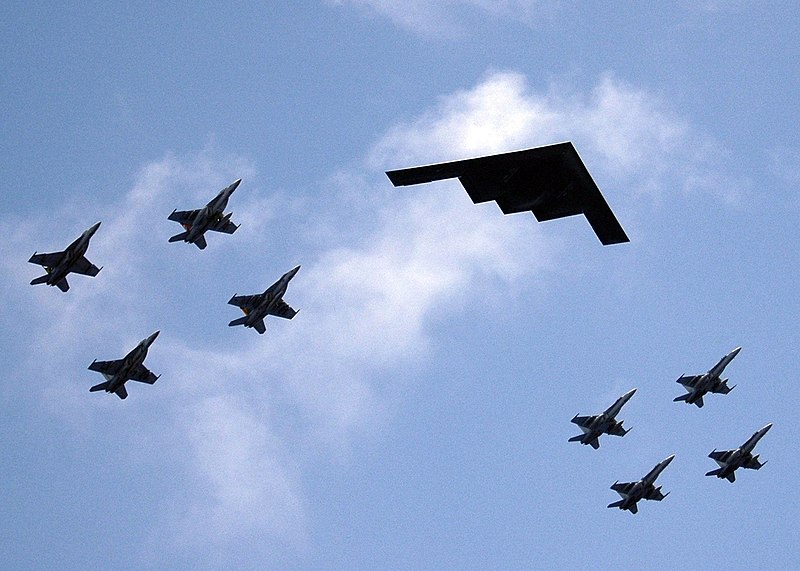Countdown in South-East Asia as North Korea Loads Missiles on to Launchers
Add bookmarkTwo medium-range missiles have been placed in mobile launchers in North Korea, according to military sources in the South Korean capital of Seoul on Friday.
Related: North Korea: Grim Reality Behind Threats to U.S.
The weaponry was moved to the peninsula’s east coast in the "last few days," a U.S. official confirmed.
The move comes after days of persistent threats from North Korean leader Kim Jong Un that identified the South, along with the U.S., as potential targets.
It is thought the missles are now  being hidden in an unidentified facility. Intelligence reports suggest the missiles are Musudans, which have a 2,500-mile range.
being hidden in an unidentified facility. Intelligence reports suggest the missiles are Musudans, which have a 2,500-mile range.
U.S. officials believe the missiles have been moved for a test strike and are waiting to see if the Pyongyang regime orders its airmen and seamen to stay clear of the area.
In preparation of an attack, the U.S. announced on Wednesday that it was sending ballistic missile defenses to Guam. Both American naval and air bases are situated on the Western Pacific territory, which North Korea has cited as a possible target.
Related: Geospatial Information Systems: Addressing the Challenges
Defense Secretary Chuck Hagel said on Thursday that the U.S. is taking the provocative rhetoric from Pyongyang "very seriously." Many military analysts believe North Korea would never genuinely consider an attack on the U.S., but have also expressed alarm at the mental stability of the communist country’s leader.
Some believe that the increasingly belligerent talk is merely aimed at cementing the domestic authority of Kim Jong Un.
South Korea, gripped by jitters over Pyongyang’s accusation that the U.S. is sending the region to "the brink of war," has sent Aegis destroyers equipped with advanced radar systems to both of its coasts, CNN reports.
Confusion in the region was further fueled by Denis Samsonov, the press officer of the Russian embassy in Pyongyang, who announced this week that North Korea has asked the embassy to consider a possible evacuation of its staff because of the tensions in the region.
"The Russian side has taken note of this suggestion. No decision has been made yet," he said.
News of the loaded missiles caps off a month of increased activity in the region. Here is a timeline leading up to Friday’s announcement.
 March 8: U.S. flies B-52 bombers over South Korea in what the U.S. Pacific Command called a routine mission to highlight a "continuous bomber presence," but was also regarded as a shoe of force.
March 8: U.S. flies B-52 bombers over South Korea in what the U.S. Pacific Command called a routine mission to highlight a "continuous bomber presence," but was also regarded as a shoe of force.
March 22: Amid rising threats, a Combined Counter-Provocation Plan was signed by South Korea and the U.S.
March 26: Second fly-over of American B-52 bombers.
March 28: U.S. flies the nuclear-capable B-2 Spirit stealth bombers over South Korea and issued a statement saying the mission demonstrated "the United States' ability to conduct long range, precision strikes quickly and at will."
March 31: The central committee of the North’s ruling Workers’ Party announced a "new strategic line," saying that it was determined to rebuild its economy in the face of international sanctions while simultaneously expanding its nuclear weapons arsenal. The U.S., meanwhile deploys F-22 Raptor jets to an American Air Force Base in South Korea.
April 1: President Park Geun-hye of South Korea ordered the country’s military on Monday to deliver a strong and immediate response to any North Korean provocation. The U.S. Navy is moving a sea-based radar platform closer to the North Korean coast in order to monitor that country's military moves.
April 2: North Korea's parliament endorsed plans to give nuclear weapons greater prominence in the country's defenses.
April 3: The United States announced it was sending ballistic missile defenses to Guam
April 4: The U.S refines its message toward North Korea. Amid concerns that American rhetoricThe Pentagon now says it is working to decrease the temperature as it maintains a frank and vigilant stance toward Pyongyang's threats. North Korea barred South Korean workers and managers for a second day from entering the Kaesong industrial complex, an economic cooperation zone on the North's side of the border. The complex houses operations of scores of South Korean companies.
















